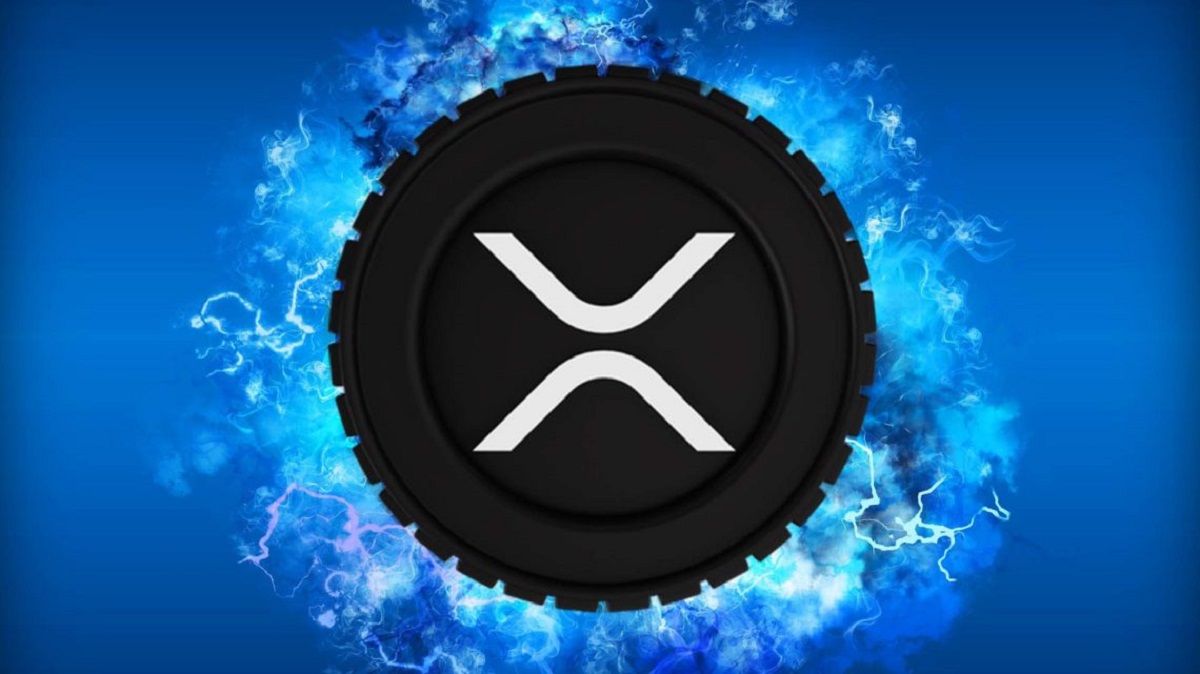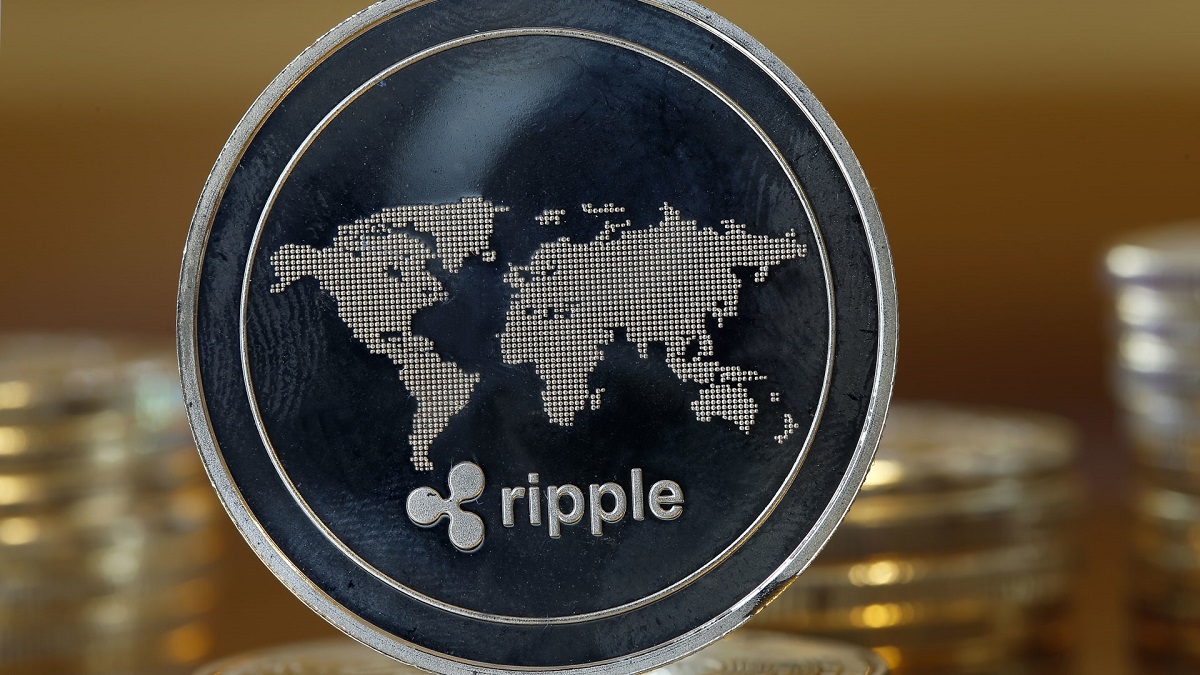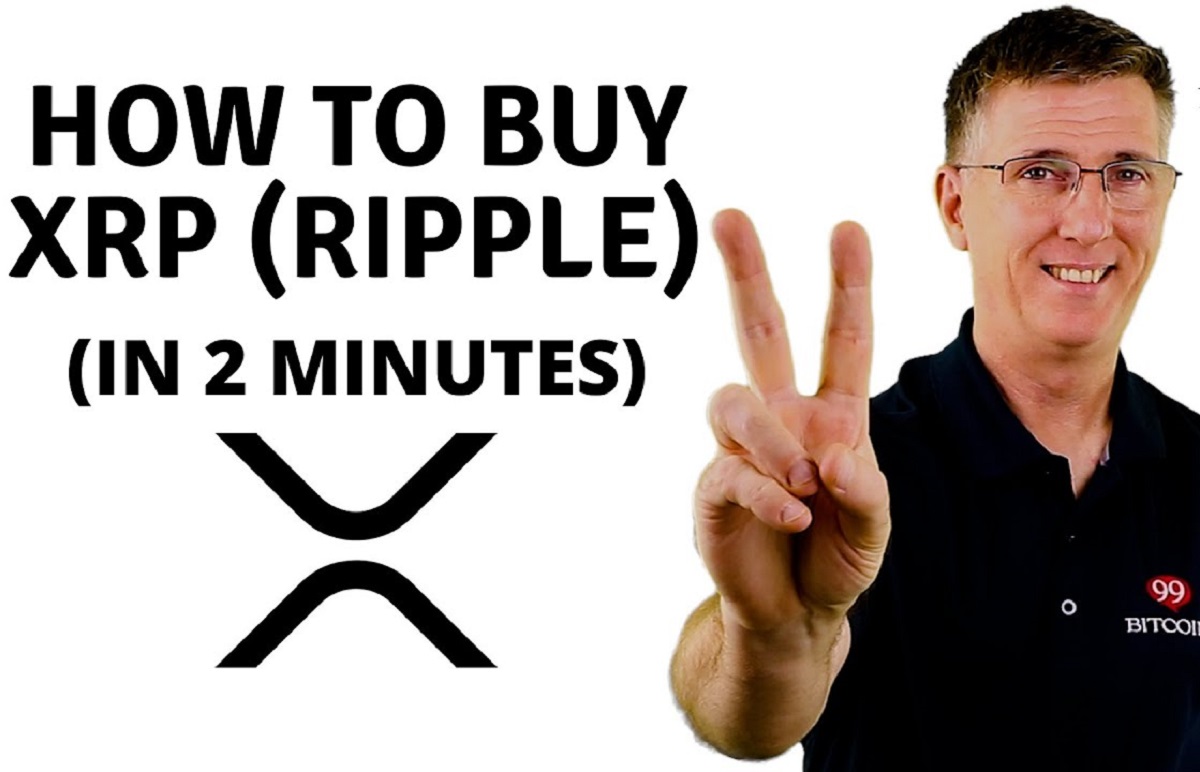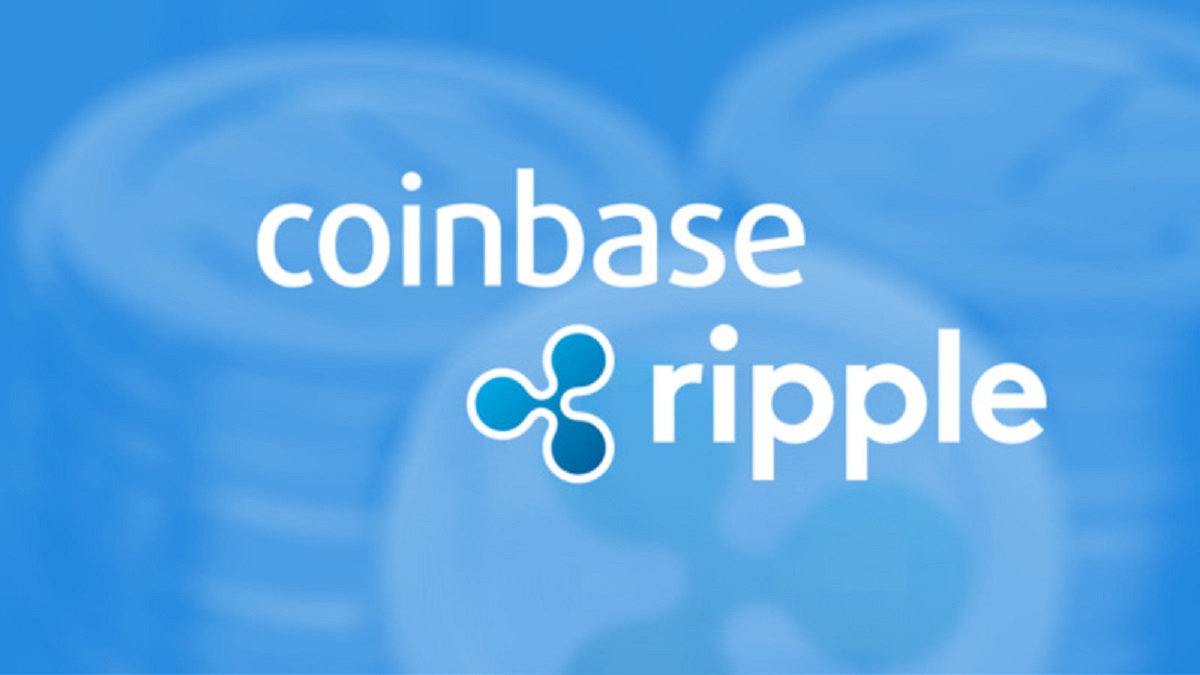Introduction
Welcome to the world of cryptocurrencies, where exciting investment opportunities abound. If you’ve been exploring the realm of digital assets, you’ve likely come across XRP, a prominent cryptocurrency with a unique value proposition. In this article, we will dive into the world of XRP and explore the factors to consider when determining how much XRP you should own.
XRP is a digital asset created by Ripple Labs, designed to facilitate fast and low-cost international money transfers. Unlike other cryptocurrencies, XRP is not mined, but rather pre-mined and distributed by its creators. It operates on a decentralized ledger system called the XRP Ledger, which enables transactions to settle within seconds.
One of the key considerations when deciding how much XRP to own is your financial goals. Are you aiming for short-term gains or long-term growth? If you’re looking to make a quick profit, you might consider a smaller investment in XRP. However, if you’re in it for the long haul, you may want to take a more substantial position in XRP, considering its potential for future value appreciation.
Another important factor to consider is your risk tolerance. As with any investment, there is always a level of risk involved. The value of cryptocurrencies can be volatile, and XRP is no exception. If you have a higher risk tolerance and are comfortable with market fluctuations, you may be inclined to hold a larger amount of XRP. On the other hand, if you prefer a more conservative approach, a smaller allocation might be more suitable.
Market analysis is crucial when determining the amount of XRP to own. By staying informed about market trends and analyzing historical and projected price movements, you can make more informed decisions. Keep an eye on news and updates related to XRP, as they can greatly influence its price and overall market sentiment.
Evaluating XRP itself is also essential. Look into its technology, partnerships, and adoption rates. Analyze the team behind the project and their credibility. Understanding the fundamentals of XRP will help you determine its potential for future growth.
Diversification is a crucial aspect of any investment strategy. While XRP may have its unique advantages, it’s essential not to put all your eggs in one basket. Consider diversifying your portfolio with other cryptocurrencies or traditional assets to spread out the risk and maximize potential returns.
Ultimately, the amount of XRP you should own depends on your individual circumstances, goals, and risk tolerance. It’s recommended to consult with a financial advisor or do thorough research before making any investment decisions.
Understanding XRP
In order to determine how much XRP you should own, it’s crucial to have a good understanding of what XRP is and how it works. XRP is a digital asset that was created by Ripple Labs, a San Francisco-based technology company, with the aim of revolutionizing cross-border payments.
Unlike traditional currencies, XRP is not issued or controlled by any government or central bank. Instead, it operates on a decentralized ledger system called the XRP Ledger. This ledger is maintained by a network of independent validators, making it highly secure and resistant to censorship.
One of the key features of XRP is its speed. Transactions can settle within a matter of seconds, making it ideal for cross-border transfers that often take days to complete using traditional banking systems. This speed is made possible by the consensus algorithm used in the XRP Ledger, which enables fast and efficient transaction validation.
XRP also boasts low transaction fees compared to traditional payment methods. This can be especially advantageous when sending large sums of money internationally, as traditional banking fees can be exorbitant. By utilizing XRP, users can take advantage of more cost-effective transactions.
Another unique aspect of XRP is its supply. Unlike other cryptocurrencies that are mined, XRP was pre-mined, meaning that a fixed amount of XRP was created and distributed by its creators. This fixed supply has led to some debates and discussions within the crypto community about its potential impact on the price and adoption of XRP.
It’s important to note that XRP has often been associated with Ripple Labs, the company behind its creation. While Ripple and XRP are closely intertwined, it’s crucial to understand that they are separate entities. Ripple Labs focuses on providing blockchain-based solutions for financial institutions, while XRP is the digital asset used for transactions on the XRP Ledger.
In recent years, XRP has gained traction and adoption by various financial institutions worldwide. Its potential to revolutionize cross-border payments and its partnerships with major banks have positioned it as a notable player in the cryptocurrency market.
Understanding the ins and outs of XRP will help you make an informed decision when determining how much XRP to own. By staying updated on the latest developments and advancements in its technology, you can better assess its potential for future growth and value appreciation.
Factors to Consider
Determining how much XRP to own requires careful consideration of various factors. These factors will vary depending on your individual circumstances and investment goals. Here are some key factors to consider when deciding on your XRP allocation:
- Financial Goals: Your financial goals play a significant role in determining your XRP ownership. Are you looking for short-term gains or long-term growth? If you’re interested in quick profits, a smaller allocation of XRP may be appropriate. However, if your goal is long-term wealth accumulation, a larger XRP investment might be more suitable.
- Risk Tolerance: Every investment comes with a certain level of risk, and XRP is no exception. The cryptocurrency market can be highly volatile, and it’s crucial to assess your risk tolerance before deciding on your XRP ownership. If you can handle market fluctuations and have a higher risk tolerance, you might consider a larger XRP allocation. If you prefer a more conservative approach, a smaller investment may be more appropriate.
- Market Analysis: Conducting thorough market analysis is crucial when determining how much XRP to own. Keep an eye on market trends and assess the overall sentiment towards XRP. Stay informed about news, updates, and regulatory developments that may impact the price and adoption of XRP. Analyzing historical price movements and projections can provide valuable insights to inform your XRP ownership decision.
- Evaluation of XRP: Take the time to understand XRP’s technology, use cases, and potential for widespread adoption. Assess the team behind the project and their track record. Consider the partnerships and collaborations XRP has forged within the financial industry. By evaluating these factors, you can gain a better understanding of the potential for future growth and value appreciation of XRP.
- Diversification: Diversifying your investment portfolio is a prudent approach to manage risk. While XRP may have its advantages, it’s important not to allocate all your investment capital solely to XRP. Consider diversifying your portfolio with other cryptocurrencies or traditional assets to spread out risk and maximize potential returns.
Remember, there is no one-size-fits-all answer to how much XRP you should own. It depends on your unique circumstances, investment goals, and risk tolerance. It’s advisable to consult with a financial advisor or conduct thorough research before making any investment decisions.
Financial Goals
When determining how much XRP to own, it’s essential to align your XRP allocation with your financial goals. Your financial goals can include short-term objectives, such as making a quick profit, or long-term goals, such as wealth accumulation and retirement planning. Consider the following factors when defining your financial goals:
- Time Horizon: Consider the time frame in which you aim to achieve your financial goals. If you have a short time horizon and need immediate returns, you may opt for a smaller XRP allocation. However, if you have a longer time horizon and are focused on long-term growth, a larger XRP investment may be more suitable.
- Risk Appetite: Assess your risk tolerance and appetite for volatility. XRP, like other cryptocurrencies, can experience significant price fluctuations. If you have a higher risk tolerance and are comfortable with market volatility, you may be willing to allocate a larger portion of your portfolio to XRP. However, if you prefer a lower-risk investment approach, a smaller XRP allocation might be more appropriate.
- Income Generation: Consider whether you seek regular income from your investments. XRP is primarily a growth asset, and its value appreciation can provide potential returns. However, it’s important to note that XRP does not typically generate income in the form of regular dividends.
- Cash Flow Needs: Evaluate your current and future cash flow needs. If you have immediate financial obligations or need liquidity for specific expenses, you may choose to allocate a smaller portion to XRP. Conversely, if you have surplus funds and are looking for potential high returns, you may consider a larger XRP allocation.
By defining your financial goals, you can better determine how much XRP to own and align your investment strategy accordingly. It’s important to review and reassess your financial goals periodically to ensure they remain relevant and realistic.
Keep in mind that investing in XRP, like any other investment, carries risks. The cryptocurrency market can be volatile, and the value of XRP can fluctuate. Conduct thorough research, seek professional guidance if needed, and diversify your investment portfolio to mitigate risk.
Risk Tolerance
Your risk tolerance is a crucial factor to consider when determining how much XRP to own. It reflects your ability and willingness to withstand fluctuations and potential losses in the value of your investment. Understanding your risk tolerance helps you strike a balance between potential returns and your comfort level with market volatility.
Here are key considerations when assessing your risk tolerance in relation to XRP ownership:
- Financial Stability: Evaluate your financial stability and the impact of potential losses on your overall financial well-being. If you have a secure financial situation and can afford to take higher risks, you may be more tolerant of market volatility and consider a larger XRP allocation.
- Investment Experience: Assess your level of investment knowledge and experience in managing volatile assets. If you have a good understanding of cryptocurrencies, their risks, and are comfortable with market fluctuations, you may be more open to allocating a higher percentage of your portfolio to XRP.
- Emotional Response: Reflect on your emotional response to market ups and downs. If you are easily influenced by market volatility and tend to make impulsive decisions, you may lean towards a more conservative approach with a smaller XRP allocation. On the other hand, if you can stay calm and make rational investment decisions despite market fluctuations, you may be more inclined to allocate a larger portion to XRP.
- Time Horizon: Consider the time frame in which you plan to hold your XRP investment. If you have a longer time horizon, you may have more flexibility to ride out short-term market fluctuations. This longer-term perspective may increase your risk tolerance and allow for a larger XRP allocation.
- Portfolio Diversification: Determine the diversification level of your investment portfolio. If you have a well-diversified portfolio that includes a variety of assets, you may be more comfortable with the potential risks associated with owning XRP. However, if your portfolio is concentrated in high-risk assets, you may want to allocate a smaller portion to XRP to mitigate overall risk.
It’s important to note that risk tolerance is a personal preference and can vary from individual to individual. Assess your own financial situation, knowledge, and comfort level with risk to determine the appropriate XRP ownership for your investment portfolio. Regularly reassess your risk tolerance as circumstances change and adjust your investment strategy accordingly.
Remember that diversification is essential in managing risk. By spreading your investments across different asset classes and diversifying within the cryptocurrency space, you can potentially reduce the impact of any single asset’s price volatility on your overall portfolio.
Market Analysis
Conducting thorough market analysis is crucial when determining how much XRP to own. By staying informed about market trends and analyzing various factors, you can make more informed decisions about your XRP allocation. Here are key aspects to consider during your market analysis:
- Market Trends: Monitor the overall cryptocurrency market trends and observe how XRP is performing relative to other cryptocurrencies. Look for patterns, such as price movements, trading volumes, and market capitalization. This information can provide insights into the general sentiment towards XRP and help you make more informed decisions about its ownership.
- News and Updates: Stay up-to-date with the latest news and updates related to XRP. Keep an eye on announcements made by Ripple Labs, partnerships, regulatory developments, and any notable events that could impact the value and adoption of XRP. This information can shape your understanding of XRP’s potential future growth.
- Historical Price Analysis: Analyze the historical price movements of XRP. Look at charts and identify trends, support levels, and resistance levels. Historical price analysis can provide insights into potential price patterns and help you make more informed decisions regarding XRP ownership.
- Market Sentiment: Gauge the overall sentiment of the cryptocurrency market towards XRP. Monitor discussions and opinions expressed by experts, analysts, and the wider crypto community. Positive sentiment and increasing adoption may indicate potential for future growth, while negative sentiment may raise caution flags and require further analysis.
- Market Influencers: Identify key influencers and organizations that have an impact on XRP’s price and adoption. This may include financial institutions, regulatory bodies, prominent investors, and technological advancements. Understanding their role in the market can help you consider potential risks and opportunities associated with XRP ownership.
- Technical Analysis: Consider technical analysis indicators such as moving averages, relative strength index (RSI), and volume patterns. Technical analysis can provide insights into potential entry and exit points based on historical price movements and market trends.
Market analysis should be an ongoing process as the cryptocurrency market is dynamic and constantly evolving. Keep track of relevant information sources, leverage analytical tools, and stay engaged with the crypto community to stay informed about XRP’s performance and potential future growth.
However, it’s important to note that market analysis should not be the sole determinant of your XRP ownership. Use it as a tool to support your decision-making process alongside other factors, such as your financial goals, risk tolerance, and portfolio diversification strategies.
Evaluating XRP
When determining how much XRP to own, it’s crucial to evaluate the cryptocurrency itself. Understanding the technology, partnerships, and potential for widespread adoption can help you make informed decisions about your XRP ownership. Consider the following factors when evaluating XRP:
- Technology: Take the time to understand the technology behind XRP. The XRP Ledger, designed to facilitate fast and low-cost transactions, has proven to be efficient and secure. Familiarize yourself with the consensus algorithm, the scalability of the network, and the overall technical infrastructure supporting XRP. A solid technical foundation can contribute to the long-term viability and potential growth of XRP.
- Use Cases: Assess the different use cases for XRP and its potential for widespread adoption. While XRP has gained traction in the cross-border payments space, monitor its progress in other sectors as well. Evaluate its potential to disrupt traditional financial systems and its ability to address pain points in various industries.
- Partnerships and Collaborations: Examine the partnerships and collaborations that XRP has established. XRP’s partnership with financial institutions and payment service providers can enhance its credibility and increase its potential for mainstream adoption. Evaluate the scope and impact of these partnerships as they can significantly influence XRP’s usage and adoption rates.
- Team and Leadership: Research and evaluate the team behind XRP and Ripple Labs. Assess their experience, expertise, and track record in the cryptocurrency and fintech industries. A strong and capable team can provide confidence in the future development and success of XRP.
- Regulatory Environment: Keep an eye on the regulatory landscape surrounding cryptocurrencies, including XRP. Examine how XRP is being treated by regulatory authorities in different jurisdictions. Regulatory clarity and support can contribute to increased trust and adoption of XRP.
- Market Competition: Understand the competitive landscape in which XRP operates. Analyze other cryptocurrencies and blockchain-based solutions that target similar use cases. Assess the advantages and disadvantages of XRP compared to its competitors and evaluate how XRP fares in terms of market share and potential future growth.
Evaluating XRP requires continuous monitoring and research. Keep yourself updated with the latest news, developments, and advancements within the XRP ecosystem and the wider cryptocurrency industry. Stay informed about any potential challenges or risks that may arise and adjust your XRP ownership strategy accordingly.
Remember that evaluating XRP is just one aspect of the decision-making process. Combine your assessment of XRP with other factors such as your financial goals, risk tolerance, and diversification strategies to make well-informed decisions about your XRP ownership.
Diversification
When considering how much XRP to own, diversification is a critical factor to keep in mind. Diversifying your investment portfolio helps spread out risk and potentially maximize returns. Here’s why diversification is important and how it applies to XRP ownership:
Risk Mitigation: Diversification helps reduce the impact of any single asset’s price volatility on your overall portfolio. By spreading your investments across different asset classes, such as stocks, bonds, real estate, and cryptocurrencies like XRP, you can limit potential losses caused by a significant decline in a particular investment.
Opportunity for Growth: Diversification also offers the potential for growth. Different assets have varying degrees of correlation with one another, meaning their prices may move independently. When one asset class is experiencing a decline, another may be performing well. By diversifying your portfolio, you increase the likelihood of capturing returns from different sources of growth.
Reduced Exposure to Cryptocurrency Volatility: Cryptocurrencies, including XRP, are known for their price volatility. Holding a diversified portfolio that includes other asset classes can help reduce your exposure to the fluctuations of the cryptocurrency market. This can provide more stability and potentially lower the overall risk associated with owning XRP.
Increased Exposure to Upside Potential: Diversification allows you to allocate a portion of your investment capital to different assets that have the potential for significant growth. While XRP may have its unique value proposition and potential for growth, other assets in your portfolio can offer additional opportunities for upside potential.
When it comes to diversification, consider factors such as your risk tolerance, investment goals, and time horizon. While XRP can be an attractive investment, it’s important not to concentrate all your investment capital solely in XRP. Allocate your funds across different asset classes based on your risk profile and investment strategy.
Additionally, diversification can extend beyond just different asset classes. Within the cryptocurrency space, consider diversifying across multiple cryptocurrencies to further spread out risk. By including other cryptocurrencies with different use cases and market positions in your portfolio, you can potentially benefit from unique opportunities each cryptocurrency presents.
Regularly assess and rebalance your portfolio to maintain diversification, as the performance of different assets may vary over time. Keep in mind that diversification does not guarantee profits or protect against losses, but it is a recognized strategy to help manage risk in investment portfolios.
Investment Strategies
When determining how much XRP to own, it’s essential to consider your investment strategy. Your strategy should align with your financial goals, risk tolerance, and time horizon. Here are a few investment strategies to consider:
Long-Term Hold: The long-term hold strategy involves buying and holding XRP for an extended period, typically with the expectation that the value will increase over time. This strategy requires patience and a belief in the long-term potential of XRP. You may consider a larger XRP allocation if you have a longer time horizon and are confident in the long-term growth prospects of XRP.
Buy and Hold with Periodic Rebalancing: This strategy involves purchasing XRP with the intention of holding it for the long term but periodically rebalancing your portfolio. Rebalancing involves selling a portion of your XRP holdings and reallocating the proceeds into other assets within your portfolio to maintain diversification. This strategy allows you to capture potential gains from XRP while managing risk through diversification.
Trading and Speculation: Trading and speculation strategies involve actively buying and selling XRP with the goal of profiting from short-term price movements. This strategy requires a deep understanding of market trends, technical analysis, and the ability to react quickly to market fluctuations. If you choose to pursue a trading and speculation strategy, you may consider a smaller XRP allocation and a more active monitoring approach.
Cost Averaging: Cost averaging involves investing a fixed amount of money in XRP at regular intervals, regardless of its price. By consistently buying XRP over time, you can mitigate the impact of short-term price fluctuations and potentially take advantage of dollar-cost averaging. This strategy allows you to accumulate XRP gradually and reduce the potential negative impact of market timing.
Combination Strategies: You may choose to combine investment strategies to create a tailored approach that suits your specific needs. For example, you could apply a long-term hold strategy for a significant portion of your XRP allocation while incorporating a smaller portion for trading or cost averaging. The combination of strategies allows for a diversified approach to XRP ownership.
Regardless of the investment strategy you choose, it’s important to regularly review and adapt your approach as market conditions and your investment goals evolve. Stay informed about market trends, news, and regulatory developments that may impact XRP. Keep an eye on your risk tolerance and reassess your strategy if necessary.
Lastly, consider consulting with a financial advisor or engaging with a reputable cryptocurrency investment platform to gain additional insights and guidance.
Conclusion
Deciding how much XRP to own is a personal decision that requires careful consideration of various factors. It’s essential to align your XRP ownership with your financial goals, risk tolerance, and investment strategy. By evaluating XRP’s technology, partnerships, and potential for widespread adoption, you can gain insights into its potential growth and value appreciation.
Consider conducting market analysis to understand market trends, news, and sentiments surrounding XRP. This analysis can aid in making informed decisions regarding your XRP ownership and provide a better understanding of the cryptocurrency market as a whole.
Remember the importance of diversification to manage risk. Allocate your investment capital across different assets, including other cryptocurrencies and traditional investments, to protect against volatility and potentially maximize returns.
Additionally, it’s crucial to regularly reassess your XRP ownership and adjust your strategy as needed. Keep an eye on market conditions, regulatory developments, and the overall performance of XRP to ensure it remains aligned with your investment goals.
While this guide provides valuable insights into determining how much XRP to own, it’s always advisable to seek professional advice from a financial advisor or conduct thorough research before making any investment decisions.
By taking a thoughtful approach and considering the various factors discussed, you can make informed decisions about your XRP ownership and increase your chances of achieving your financial goals in the cryptocurrency market.

























